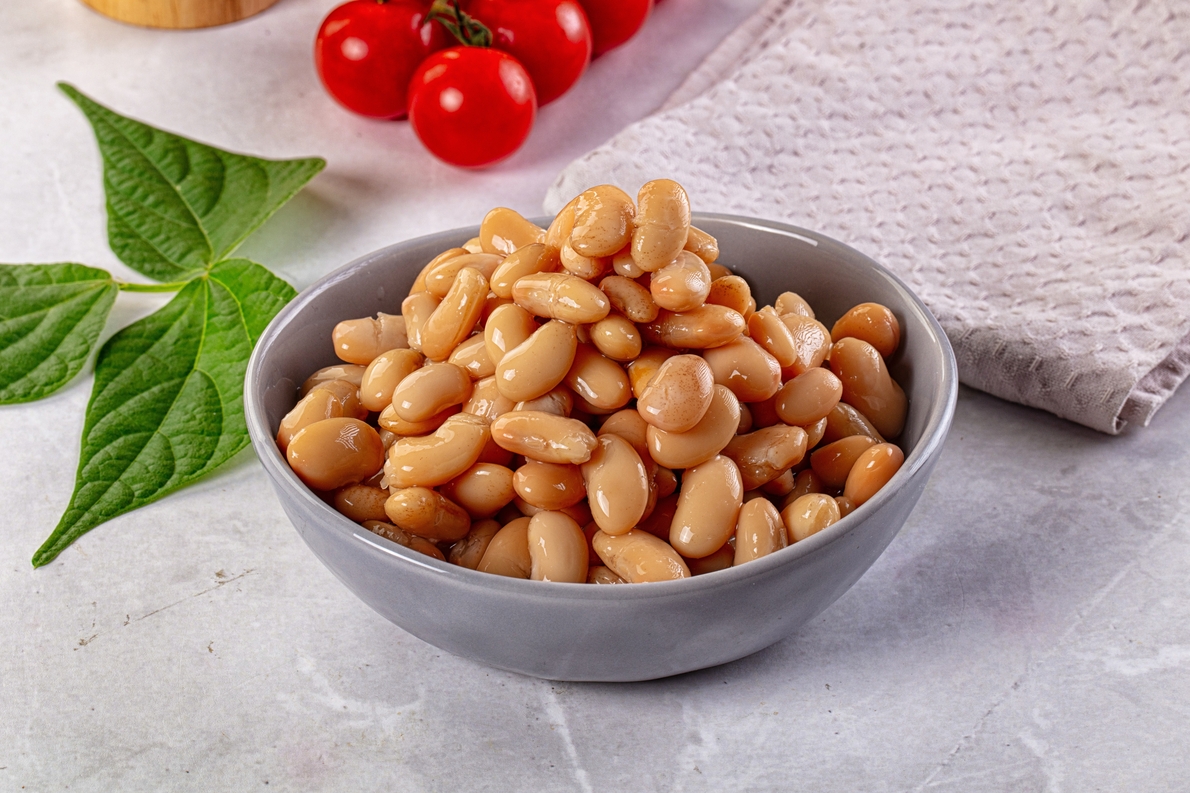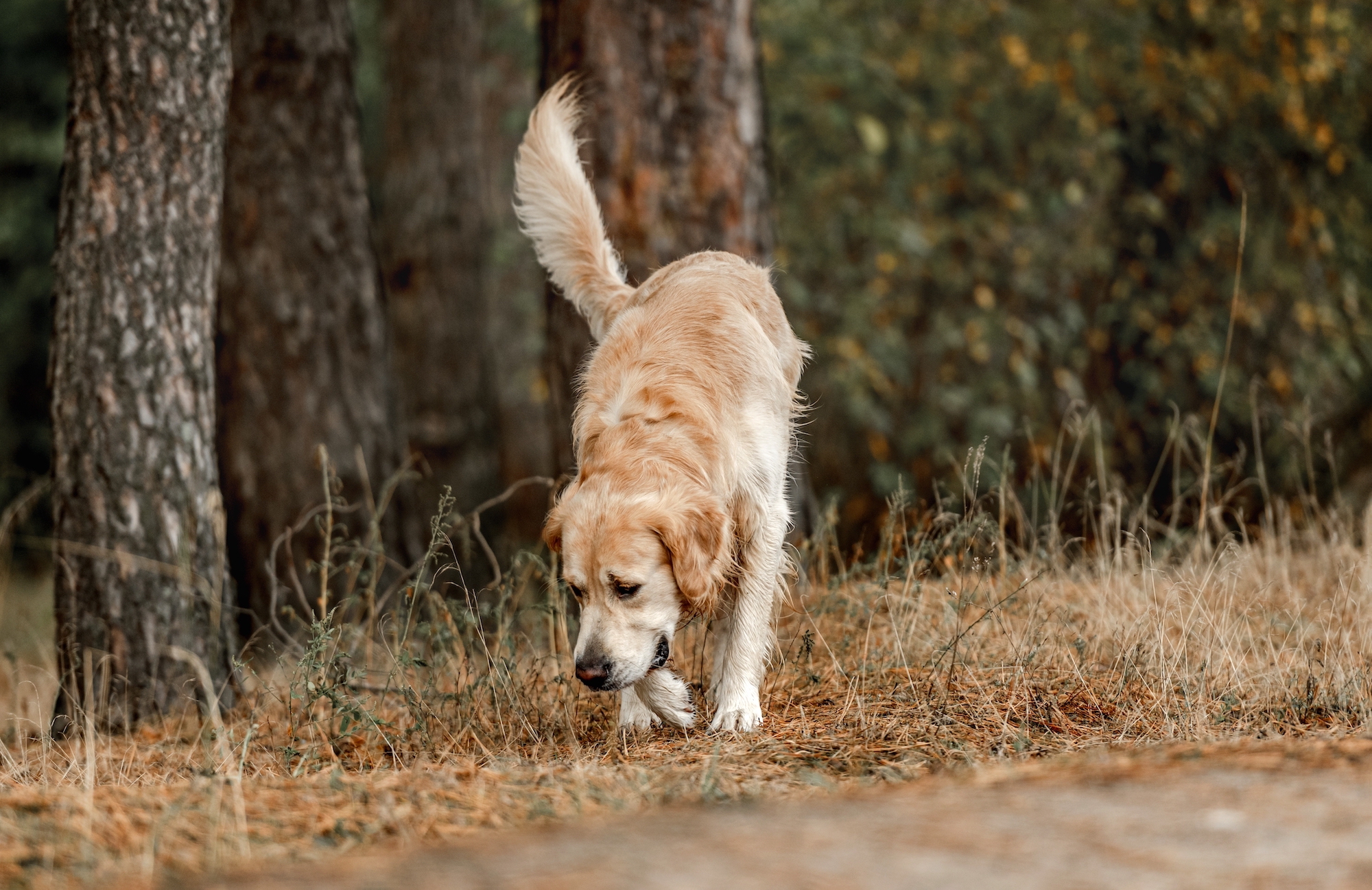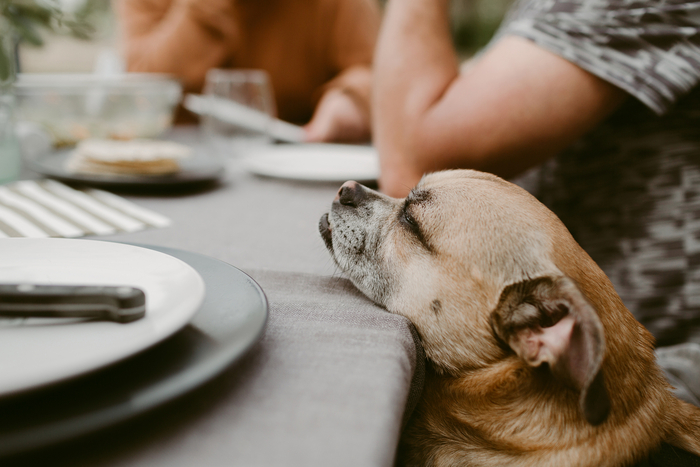In this article:
- What is the makeup of a dog’s coat?
- What determines a dog’s coat coloring?
- What does a dog’s coat say about their health?
- Why does my dog have dry, itchy skin?
- What can I do about my dog’s dull coat, dry skin, or dandruff?
- What does it mean if my dog’s hair is thinning?
- How does nutrition affect my dog’s coat?
- How often should I bathe my dog?
- How often should I brush my dog?
- Can I groom my dog’s whiskers?
This article was updated in August of 2025.
Whether silky smooth, curly, or scruffy, a canine coat does more than look good. It keeps a dog warm in winter and cool in summer. It can repel dirt and moisture—and attract humans (with its pettable softness) and other dogs (as it transfers chemicals from the skin into the air). A dog’s coat is also a meaningful indicator of overall health.
“Your dog’s coat’s primary [functions are] to protect their skin from the sun, keep them warm or cool, [and] keep dirt and water away,” says Sara Ochoa, DVM.
Dog hair is complex. It comes in a stunning array of colors, patterns, lengths, and textures that tell a genetic story about your dog, and works in a number of ways to safeguard their health and comfort.
Your dog’s coat deserves care and attention. Below, we’ll explore some of the things it’s telling you, and how to care for it.
What is the makeup of a dog’s coat?
Most dog breeds have three different types of hair on their bodies: guard hair (also known as primary hair or topcoat), undercoat (secondary hair), and whiskers (which have special powers).
The undercoat is the part of a dog’s coat that grows closest to their skin. It has a softer, downy texture suitable to its primary function—providing insulation. The last time you brushed your dog’s hair, you may have noticed a bunch of shorter pieces of hair come out in clusters. These hairs are likely the undercoat.
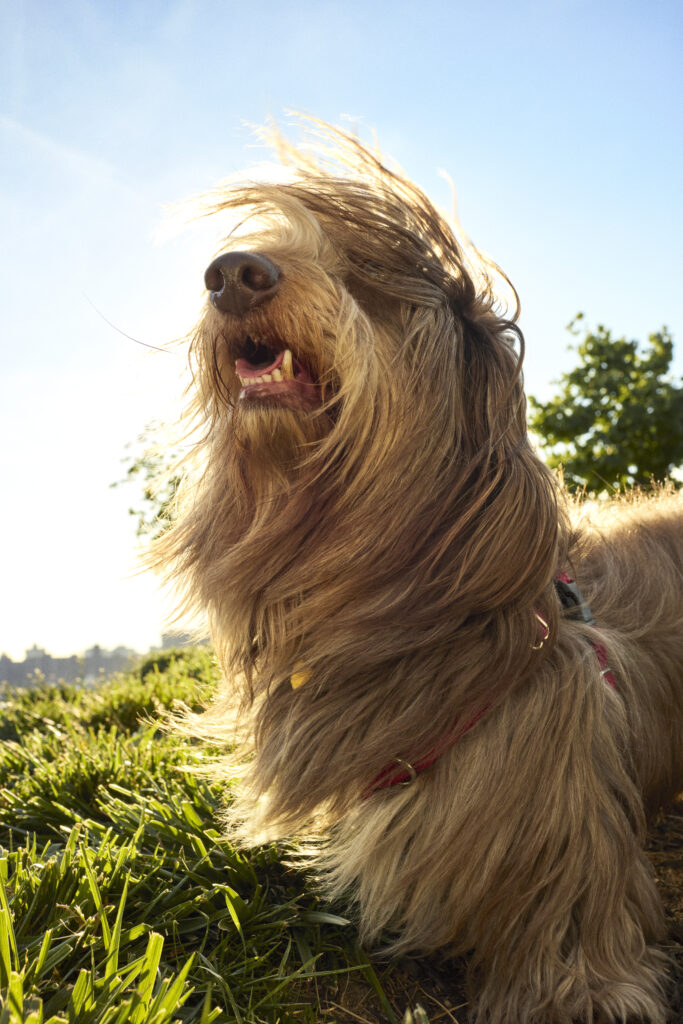
When we wrote about how to care for double-coated dogs during the summer, Brian Collins, DVM, a veterinarian with the Cornell Riney Canine Health Center, told us: “Shaving a double-coated breed can damage hair follicles and result in poor regrowth. There are other, more effective steps to take to keep dogs cool.”
Double-coated breeds, like German shepherds, huskies, Bernese mountain dogs, collies, corgis, and many others, have an undercoat. Dogs without that undercoat, or single-coat dogs, include Afghan hounds, poodles, Maltese, whippets, some chihuahuas, and others. They have a longer cycle of hair growth—making it seem as if they do not shed, or shed lightly. In contrast, some double-coated breeds will “blow,” or shed, their entire undercoat seasonally.
Guard hair is thicker and grows longer than the undercoat. Essentially, when you look at your dog, most of the hair that you see right away is their guard hair.
Guard hair is important because it protects your dog’s skin from foreign objects; it also serves as an extra layer of protection against cold weather and injuries. “The topcoat is used to repel water and keep dirt from reaching the skin,” Dr. Ochoa says.
From those basic components come the apparently endless variety of coats we see among different types of dogs.
What determines a dog’s coat coloring?
Located within the hair follicle (the bulb and outer root sheath) are the same skin cells (melanocytes) that make melanin.
Amazingly, given the variety of color seen across all types of dogs, only two basic pigments determine coat color: eumelanin (black, brown, blue, or grey) and phaeomelanin (red, tan, yellow, and cream). Several genes impact coat color by manipulating these two pigments.
In addition to a range of colors, genes can dictate coat patterns including spotted, brindle, dappled, merle, and agouti (where each hair shaft has several bands of color).
What does a dog’s coat say about their health?
A dog’s coat can give clues about their health in two main ways. The dog’s coat color or pattern could tell you that the dog may be predisposed to certain genetic disorders. The gene that produces a merle coat, for example, is linked to deafness and vision issues. In some breeds, like boxers and Dalmatians, white pigmentation is linked to an increased risk of deafness.
A dog’s coat can also exhibit specific signs—such as patchiness, oiliness, balding, itching, or thinning—that may signify health issues.
To determine what your dog’s coat might be telling you, it’s important to know what their coat should look like. If your dog has a healthy coat and a good bill of health, their coat will be soft to the touch and generally feel smooth, even if they’re wire-haired. It’s usually easy to spot the difference between wiry and brittle. It should look a little shiny.
Your dog’s coat shouldn’t be excessively oily or have a strong, foul smell (this can be an indicator of bacteria or yeast build-up). It shouldn’t be greasy, dusty, dry, balding, or loose (with big chunks of undercoat hair coming out on their own).
An irritated, abnormal coat could imply allergies, hormone problems including thyroid or elevated cortisol, secondary infections, a genetic problem, or other issues. If you notice any unexplained changes in your dog’s coat, call your veterinarian
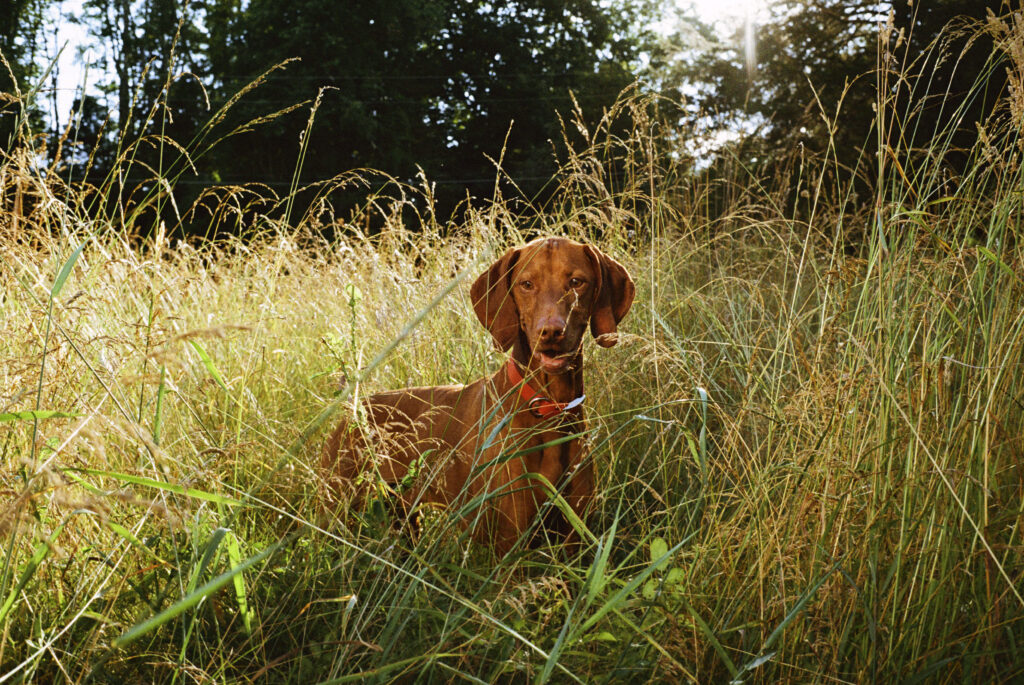
Coat-related signs of illness
Dry, itchy skin
If your dog has dry or itchy skin, it could mean they have allergies. Dogs can have a reaction to any of the typical allergens that impact people, including pollen from plants and grass, as well as certain foods. The three most common types of allergies seen in dogs include environmental allergies (atopy), brought on by substances including grasses, pollens, and dust; flea allergies; and food allergies.
“The most common symptoms seen [in] dogs with allergies are itching, bald spots, smelly skin, greasy skin, and flaky skin,” Dr. Ochoa says. “Just like with people, when these allergens contact [dogs’] skin, they will start to scratch. This disrupts the normal barrier that is present on your dog’s skin. Your dog’s skin always has bacteria and yeast on it, looking for a place to get into the skin. These micro-abrasions that your dog makes when they are scratching make the perfect place for your dog to develop a skin infection from their allergies.”
If your dog is suffering from dry or itchy skin from allergies, work with your veterinarian to diagnose the cause. If the vet suspects environmental allergies, he or she may suggest intradermal testing with a veterinary dermatologist. If food is the source, the vet may suggest an elimination diet.
If your dog is itching frequently, but does not seem to have an allergy, they might have fleas. Fleas are the most common allergy in dogs and cats.
“The most common sign that your pet has fleas is actually seeing fleas,” Dr. Ochoa says. “If your dog has very thick hair, however, you may not see them. Your dog may be itching a lot, usually at the base of the tail. They may also be losing hair on their backs.”
Fleas are a pretty common issue with dogs’ coats, so there is minimal need to worry. If you see fleas on your pet, contact your veterinarian to discuss appropriate and effective flea control measures. While treating your pet, remember that fleas also live in your pet’s environment, so make sure to clean anything that your pet sleeps on or any area where they spend a lot of time.
Aside from fleas and allergies, Dr. Ochoa advises that pet owners also be wary of skin mites. Your dog might be struggling with mites—which may live in hair follicles or burrow into the top layer of their skin—if they are exhibiting signs of intense itchiness (scratching, biting, licking); scaly, crusty skin; redness; sores; white flakes; foul odor; hair loss; and/or lesions on the elbows and ankles.
The parasitic mite Demodex canis, which lives in the hair follicles of dogs, can cause Demodectic mange in those who have immature or compromised immune systems (typically puppies, older dogs, or dogs with a serious illness). If you’re seeing any symptoms of mites, be sure to consult your veterinarian.
Itching and hair loss can also indicate a hot spot. Hot spots, or acute moist dermatitis, are areas of infected, inflamed skin that can grow worse with constant itching or licking. They can be caused by insect bites, allergies, and a range of other factors. Dogs with matted or thick coats can be more prone to hot spots—and they occur more commonly in warmer weather.
Dullness, dryness, and dandruff
This might be harder to spot than itching, but look out for fur that simply doesn’t look shiny and healthy—whether it’s dull, dry and broken, or your pup has excessive white flakes.
Dull, dry hair can have a wide range of causes. One possible culprit is improper nutrition (more on that later). The issue could also be surface-level: make sure you’re not over-bathing your dog, or using harsh shampoos that aren’t formulated specifically for canine skin and hair. You might also want to skip the blow dryer.
Dandruff in dogs is most commonly a secondary condition, and can be related to a whole host of underlying conditions. Dandruff is often related to allergies, but the flakes could also be triggered by thyroid issues, skin infections, diet, or even weather.
Thinning hair
Your dog’s hair could thin for several reasons; some are illnesses, but sometimes it’s just genetics.
If your dog’s hair is thinning all over, it could indicate an underactive thyroid gland. This can be more common in some breeds, including golden retrievers, Dobermans, and Irish setters. This condition may also come with weight gain and scaly skin.
Illness or stress can also show up in your dog’s coat in the form of dullness, brittleness, and excessive shedding.
Hormonal imbalances like Cushing’s disease can also cause thinning or loss of hair. This condition causes harmful overproduction of cortisol in the body, and is often accompanied by increased urination and drinking and increased appetite.
And, just like humans, dogs can get pattern baldness. In dogs, this is often seen as hair loss behind the ears on the backs of the thighs or on the chest and abdomen. Pattern baldness can affect both male and female dogs.
How does nutrition affect a dog’s coat?
The short answer is: nutrition has a huge impact on the health and appearance of your dog’s skin and coat. Talk to your veterinarian about what diet is best for your dog’s coat and overall health; food from The Farmer’s Dog supports healthy skin and glossy coats.
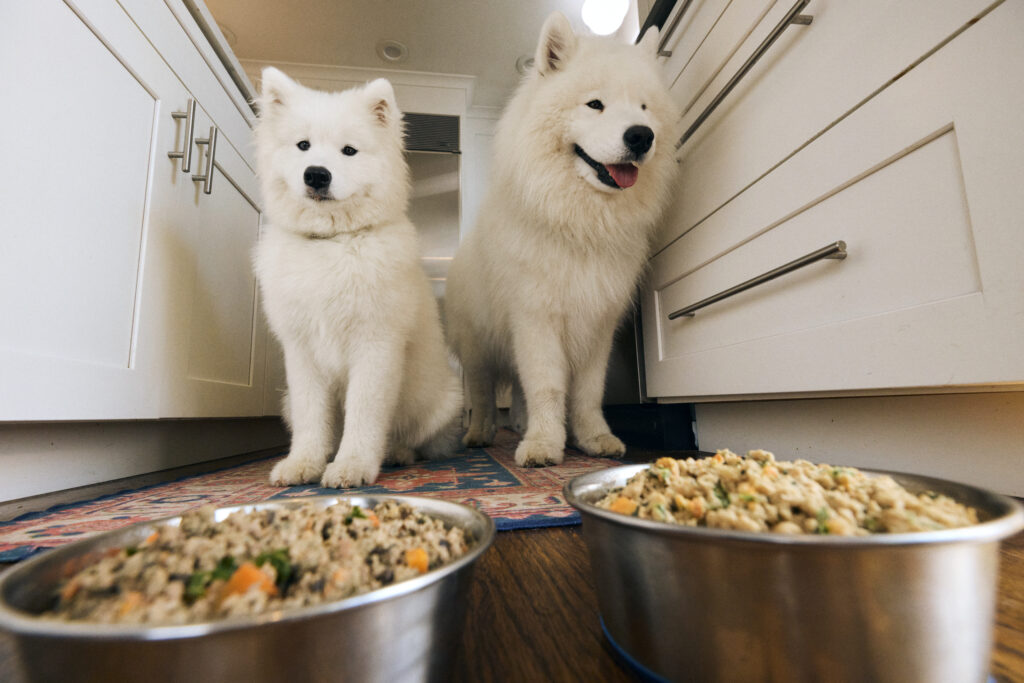
Bathing your dog
Whether or not they have allergies, correct bathing is crucial to the health of your dog’s coat.
The first step in bathing your dog is taking whatever steps are necessary to ensure they don’t despise the whole experience. If you have access to a DIY facility with elevated tubs, that can be a good option—especially for a big dog. If you’re using your own tub, place a towel in it to reduce the scary slippery feeling, and start by just putting your dog in the tub and giving a treat or toy to form a positive association. As you start bathing, make sure that bath time is always associated with good things—if possible, have two people in the room so one can dispense pets and treats while the other does the washing.
Many veterinarians recommend placing cotton balls in your dog’s ears, if they’ll allow it, to prevent water from getting in, which can contribute to secondary ear infections. If you don’t have a hose attachment, have a container on hand to use for rinsing. Use warm water and get your dog thoroughly soaked before applying a gentle, natural shampoo made for dogs.
Don’t use human shampoo on your dog. It messes with their pH, and can irritate their skin or worse. Consult with your vet and use a dog-friendly shampoo that they recommend.
Wash every part of your dog from the neck down. Instead of lathering up the face, which your dog may find unpleasant and risks soap irritating the eyes, use a washcloth to clean this area.
There’s no hard and fast rule about how often to bathe your dog—it can depend on breed, lifestyle, and other factors—but you can aim for once a month, or even less often, unless they’re especially dirty, exposed to other irritants, or have a medical condition. Too-frequent bathing can dry the skin and coat. If you’re not sure how frequently to bathe your dog, ask your vet.
Brushing your dog
Brushing your dog keeps them looking great, and also serves some other important functions.
Regular brushing helps to distribute the coat’s natural oils, keeping your dog’s coat shiny. If your dog has an undercoat, regular brushing can help keep them cooler—it prevents this downy hair from getting impacted against the skin to promote the flow of air. This up-close experience can also help you spot anything unusual on your dog’s skin, like lumps or parasites.
Brushing also prevents matting, which isn’t just an aesthetic issue. “If your pet’s hair gets tangled and matted, this can pull on the skin, causing pain and inflammation,” Dr. Ochoa explains. “Also, these mats can trap bacteria, dirt, and debris on the skin. This can damage your dog’s skin and cause it to become infected.” It may also cause a foul-smelling odor, as bacteria buildup has a distinct and unpleasant scent.
Brushing is great for you and your dog’s relationship, too. It builds your bond. And the more you brush, the less hair will land in all corners of your house.
“You should brush your dog more often in the spring,” Dr. Ochoa advises. “This is the time of year that most dogs will shed a little more as they are getting rid of their winter coat.”
Brush your dog a few times a week, or even every day during the shedding season, to minimize loose dog hair around your house. Use a brush that’s suitable for your dog’s coat. If your dog doesn’t like to be brushed, you can try a grooming glove.
Especially if your dog has an undercoat, you will want to invest in two different kinds of dog coat brushes. The first should be your typical short-toothed brush with widely spaced bristles. This is for general grooming of the topcoat or primary coat. The second tool for coat-grooming maintenance is an undercoat rake, which literally looks like a rake (just with a shorter handle).
For “hair coat” breeds, like poodles and Yorkshire terriers, you can use a comb or a slicker brush.
You may also want to get a third brush—a finer-spaced brush that can be used around critical areas like your dog’s muzzle, ears, and face.
A note on grooming and whiskers
Whiskers, or vibrissae, grow near the dog’s eyelids and muzzle from deep-rooted follicles that are full of nerve endings. These nerves send important messages to your dog’s brain, which is why you may notice a dog reacting immediately to whatever touches their whiskers. Whiskers on the dog’s muzzle typically grow to a length equal to the width of the dog’s head or body, which helps with spatial awareness. These hairs can detect changes in air currents. This helps dogs, who are naturally far-sighted, “see” objects that are nearby and move around in the dark.
This is all to say that whiskers are an important part of your dog’s sensory toolset—which means you should avoid cutting or removing them during grooming.
The next time you find yourself picking out furballs from the carpet or vacuuming the couch for the umpteenth time, remember how amazing your dog’s coat really is. It may seem like a pain when it’s shedding all over the rug and furniture, but a dog’s coat is a critical part of their identity and their health—and your dog wouldn’t be your dog without it.
